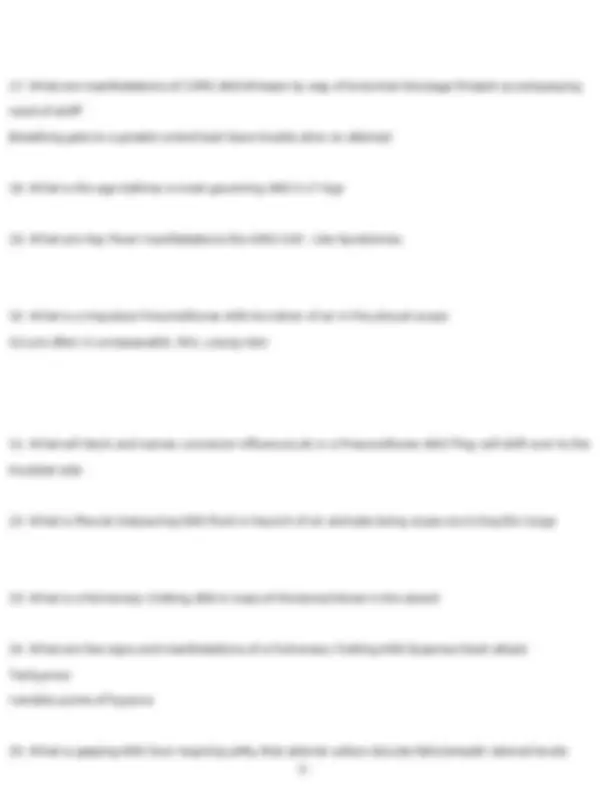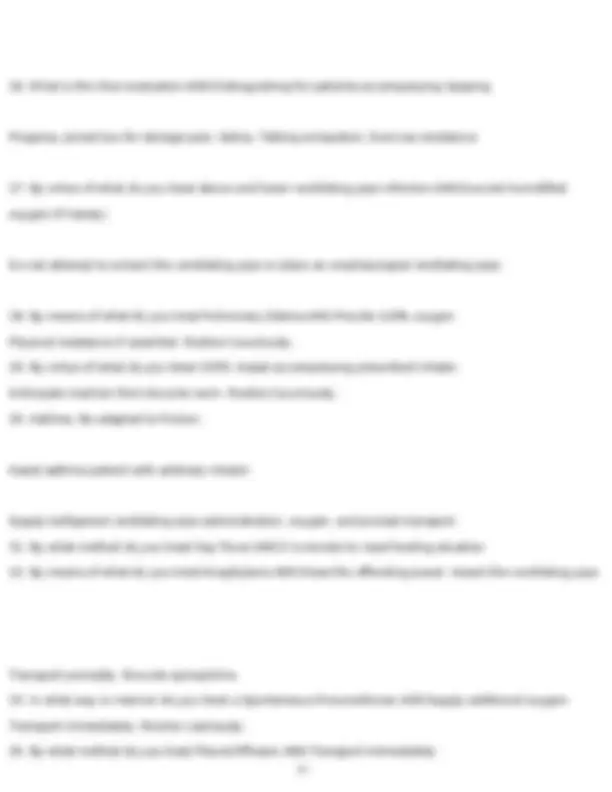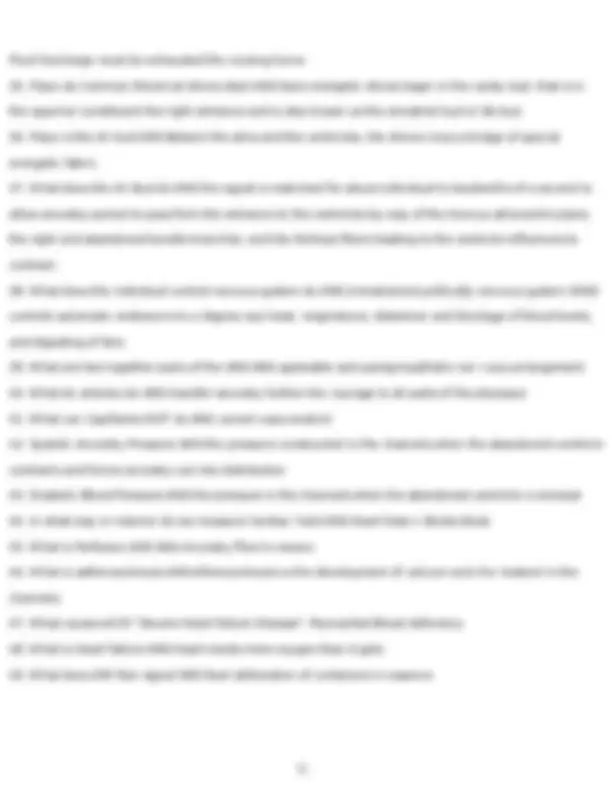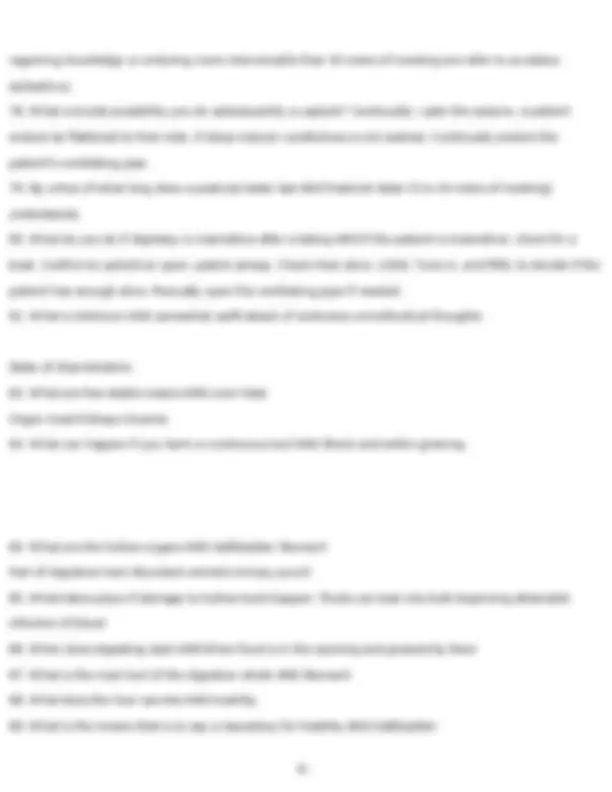






Study with the several resources on Docsity

Earn points by helping other students or get them with a premium plan


Prepare for your exams
Study with the several resources on Docsity

Earn points to download
Earn points by helping other students or get them with a premium plan
Community
Ask the community for help and clear up your study doubts
Discover the best universities in your country according to Docsity users
Free resources
Download our free guides on studying techniques, anxiety management strategies, and thesis advice from Docsity tutors
A series of questions and answers related to emergency care worker fundamentals. It covers topics such as respiratory system functions, common respiratory conditions, cardiovascular system basics, heart conditions, neurological system functions, seizures, and emergency care procedures. Designed to test knowledge and understanding of essential concepts in emergency care.
Typology: Exams
1 / 8

This page cannot be seen from the preview
Don't miss anything!





Fluid Discharge must be exhausted the nursing home
regaining knowledge or enduring more interminable than 30 notes of meeting are refer to as status epilepticus.